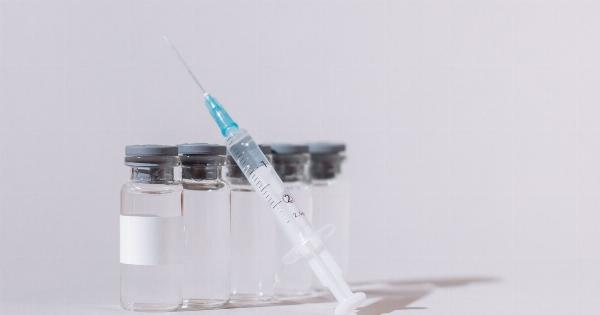Asthma is a chronic respiratory condition characterized by the inflammation and narrowing of the airways, making it difficult to breathe. It affects millions of children worldwide and can significantly impact their quality of life.
However, scientists have made a remarkable discovery that could revolutionize the way we understand and treat childhood asthma. In the depths of the ocean, a peculiar creature holds the key to unlocking potential preventative measures and improved treatments for this common condition.
The Asthma Epidemic: Understanding the Problem
Before delving into the world of the undersea creature, it’s crucial to comprehend the scope and impact of childhood asthma.
According to the World Health Organization (WHO), approximately 339 million people suffer from asthma globally, and it is the most prevalent non-communicable disease among children.
Asthma attacks can be triggered by a multitude of factors, including allergens, air pollutants, respiratory infections, and exercise.
These triggers lead to inflammation in the airways, causing symptoms such as wheezing, coughing, shortness of breath, and chest tightness.
The Tropical Wonder: Sea Anemones
Sea anemones are aquatic creatures that belong to the phylum Cnidaria. They are often found in tropical oceans and come in a variety of vivid colors, resembling floral blooms.
Although sea anemones have long fascinated scientists and marine enthusiasts for their beauty, it was their astounding secret that captured the attention of medical researchers.
Unveiling the Underwater Superpower
Scientists discovered that sea anemones possess a unique protein with properties that have a significant impact on asthma symptoms.
This protein, known as stichodactyla helianthus peptide-17 (Shp-17), has powerful anti-inflammatory and bronchodilatory effects.
Anti-inflammatory properties are crucial in managing asthma as they reduce the swelling and irritation of the airway tissues. Bronchodilation, on the other hand, helps to open up the airways, enabling easier breathing for asthma patients.
Examining the Efficacy of Shp-17
Researchers have conducted numerous studies to assess the effectiveness of Shp-17 in preventing and treating childhood asthma.
In laboratory experiments, Shp-17 has demonstrated remarkable results in reducing airway inflammation and improving lung function.
Furthermore, studies conducted on animal models of asthma have shown that treatment with Shp-17 can prevent the development of asthma-like symptoms. This offers incredible hope for the potential prevention of asthma in at-risk children.
Unlocking the Mechanism of Action
To understand how Shp-17 works, researchers have delved into its intricate mechanism of action. They have found that this sea anemone-derived protein targets specific receptors in the airway cells, inhibiting the release of inflammatory mediators.
Additionally, Shp-17 acts on smooth muscle cells in the airways, relaxing and dilating them, thus allowing for easier breathing.
The Future of Asthma Treatment: Utilizing Shp-17
The discovery of the anti-inflammatory and bronchodilatory effects of Shp-17 has the potential to revolutionize asthma treatment for children.
Scientists are actively exploring the development of therapeutic drugs that incorporate this sea anemone-derived protein.
Inhalable forms of Shp-17 are being investigated as a preventive measure for children at high risk of developing asthma.
These inhalers would be used regularly to dampen excessive inflammation and maintain optimal airway function, potentially preventing the onset of asthma symptoms.
Additionally, researchers are looking into the development of more targeted treatments that harness the unique properties of Shp-17.
By creating drugs that specifically target the receptors in the airway cells, they aim to provide more effective and personalized treatment options for children with asthma.
Preserving the Hidden Ocean Treasure
As the scientific community delves deeper into the potential of Shp-17, it is also crucial to acknowledge the importance of conserving the sea anemone habitats.
Rampant pollution, climate change, and overfishing pose significant threats to these delicate ecosystems.
Preservation efforts, such as establishing marine protected areas and raising awareness about the importance of ocean conservation, are essential to ensure the long-term survival of these remarkable undersea creatures and the potential medical benefits they offer.
Conclusion
The undersea world continues to surprise and amaze us with its hidden treasures. The discovery of the sea anemone’s potential in preventing childhood asthma opens up exciting possibilities for the future of medical science.
By unraveling the secrets of the sea, scientists have found a ray of hope for countless children who struggle with asthma every day.
The anti-inflammatory and bronchodilatory effects of Shp-17 could potentially revolutionize asthma prevention and treatment, ultimately enhancing the lives of millions of children worldwide.




























